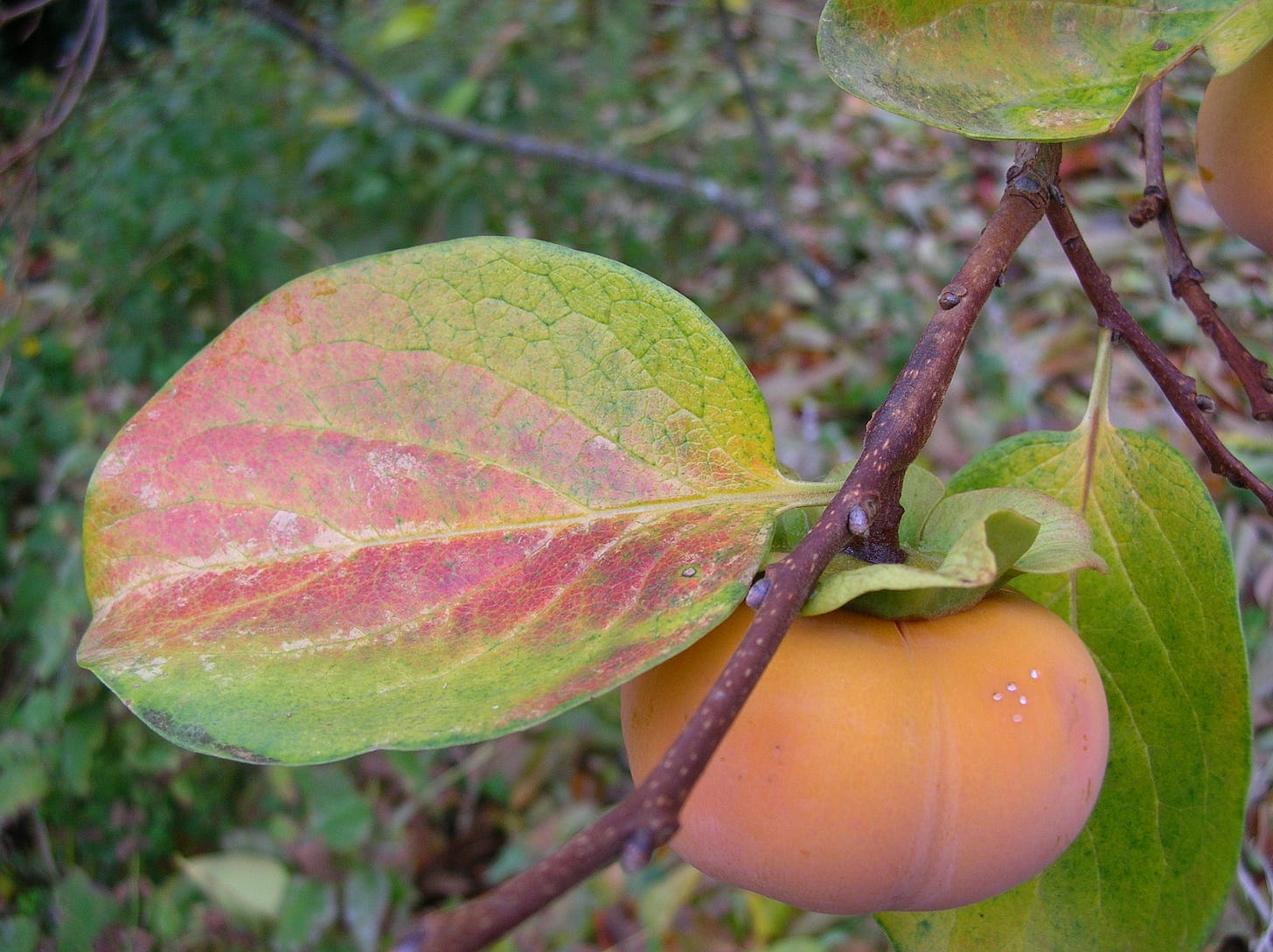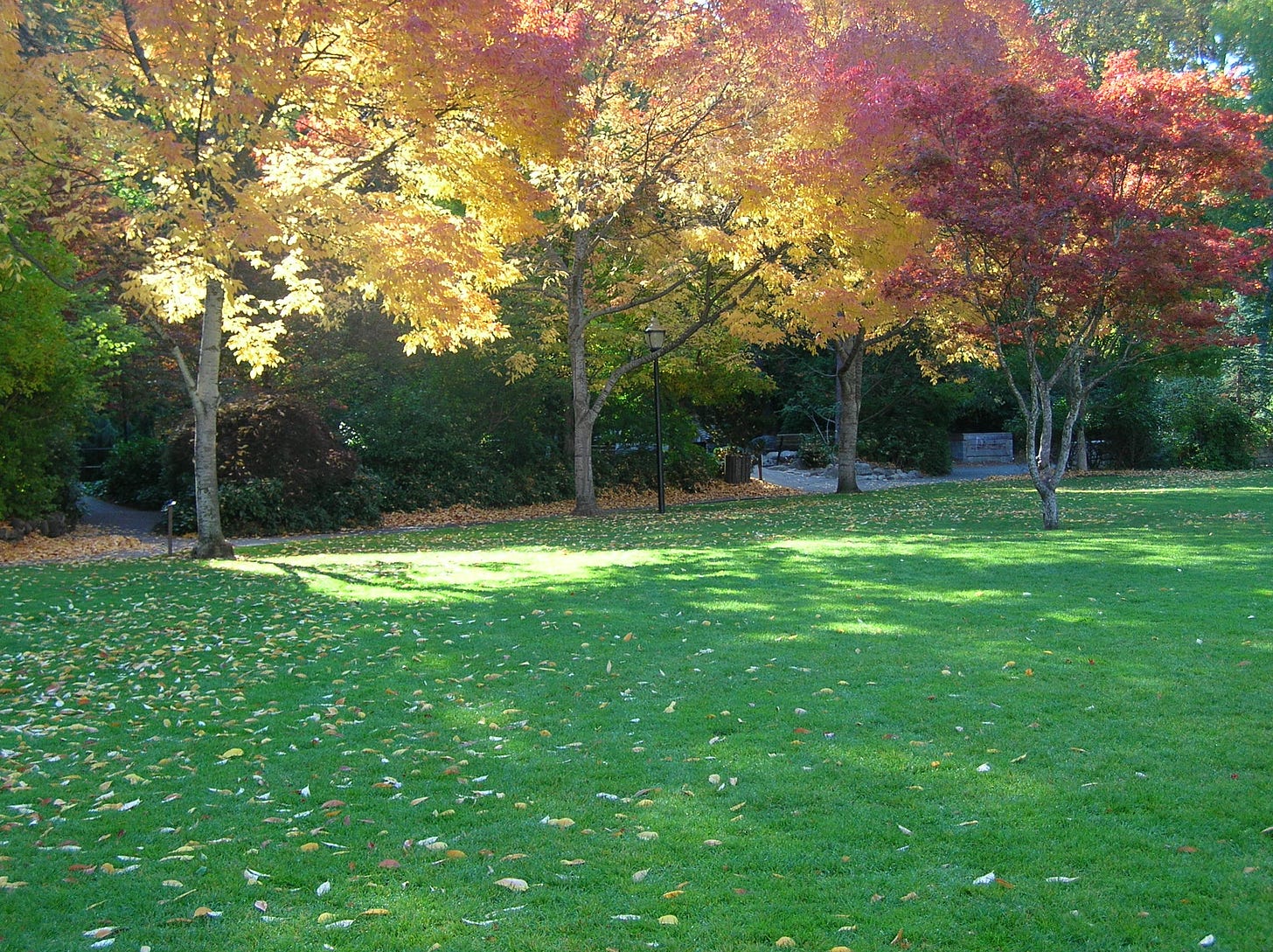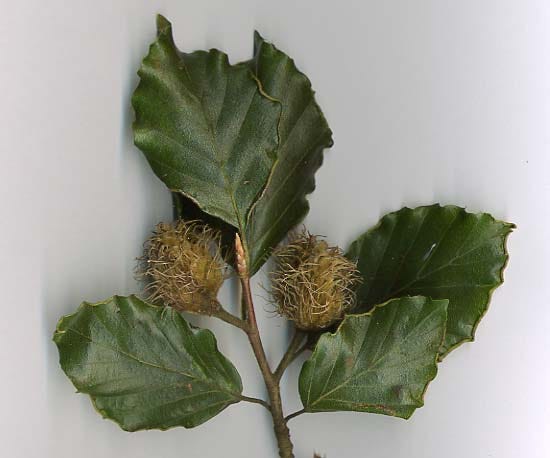Fall Gardening and Preparing for Winter
Fall is a good time to work on garden projects due to the cooler weather. This season is the beginning of downward movement or fall-ing, where the plants are moving their sugars downwards into the roots.
When it comes to seasons, there are certain things you can do that tend to fit the weather of each season - aside from unpredictable weather extremes like deep freezes and droughts we had last winter and this summer.
Here a list of projects I recommend doing during the fall that generally fit with the weather of this season - September through November depending on where you live. These are all thing you can be doing to put your garden to bed, and also prepare for winter and rainy seasons.
Leaf Cleanup: to get the leaves off your lawn, and either around your freeze sensitive plants or as covering for your garden beds, into your compost, or off to the transfer station.
Leaves fall to feed the ground and there is something to be said for the fact that nature does this seasonally. So by all means, use your leaves as a soil and root covering for the winter. You can always rake them away in the spring when you want to start working your soil and and opening up breathing from the feeder roots of your plants.
Remember, we are working WITH nature to create health and beauty in your garden - this is nature's lead for the season of fall going into winter!
Planting - This is number one because you can get your plants into the ground with cooler weather, and some time to get established before the winter. This also give you 6 months of wet weather to help establish the roots of your new plants, depending on the plant.
If you live in Southern Oregon - contrary to traditional thinking of planting in spring - fall is really the best time to plant here if you are working WITH nature because of our climate and the above reasons, aside from exceptions like Dahlias and Poppies, or other more tender plants that will get a better start in the spring after freezing is over.
Transplanting - This goes hand-in-hand with planting. It's a great season to transplant potted plants into the ground or into larger pots that have maxed out, or to move plants around. Like if you have a hosta out in full sun - now is a great time to move it to it's preferred shady location in your garden.
Pruning - With cooler weather it is safer to do pruning of your bushes and shrubs. Fruit trees and trees in general (non-evergreen) are best done in the winter after all the leaves have fallen so you can more easily see the naked structure of your tree.
Soil Amending - This means adding fresh soil to your plants and/or working soil into existing beds. Makes sure you use the right soils for the specific areas.
Good soil and compost is the meat of your gardens beds.
Fertilizing - Fertilizers (even the organic ones) are like medicine for plants. Use them sparingly to avoid making too much growth on your plants - especially with nitrogen based fertilizers.
I've also seen this done with acid based fertilizers making some jacked up growth on blueberry plants that blew out that years crop. It eventually mellowed out and dialed back in some outstanding blueberries, but this could have been avoided by using less fertilizer.
Better to use the phosphorous and potassium based fertilizers that increase blooming and drive root growth deeper - these are the ones you want for beautiful blooms and drought areas where your want to encourage your plants going deeper with their roots.
Also - DO NOT use fertilizer when you plant and transplant. In my experience new plantings and transplants do better without fertilizers, and they can actually cause your plants to die or have shock because fertilizers increase energy rapidly - again they are like medicine for plants. Add fertilizers later if need be after a plant can handle it, and is already established in its new home.
Plant Protection - For plants you want to protect against freezing weather - check the local weather forecast for below 32 degree temps and get mulch, straw, leaves (as mentioned above) or covers around the root zone of those plants you want to protect.
Covering your feeder root zones during winter dormancy is always fine, but during the spring, summer, and fall you want this zone uncovered with the roots of your plants exposed to the surface of the soil because this is the zone they breath from.

Here is the latest testimonial for a cleanup project in Southern Oregon:
“What a delight - we can see our backyard and actually garden in it now!
Brian worked tirelessly for two days removing and pruning an urban jungle in our back yard. He took great care to consider all the irrigation lines when he dug into the ground, and all our grasses and shrubs were removed quickly and skillfully. The grape vine that had a stranglehold on our Lilac, the side fence, and the neighbor's trees was pruned into a work of art!
Enthusiastic about plants and soil, and generous with his knowledge, his advice helped me make all the right decisions. He was respectful of our property and our neighbor's. He worked in a consistent, systematic, and efficient manner. All debris was continually contained and removed throughout the project.
If you enjoy doing your own gardening, but need help with the heavy lifting and continued maintenance Brian is your man. Oregon Ground Works is a thorough high-quality service provider - always on time and on budget, and has our heartfelt thanks and appreciation!
Alan & Mary Clement
Ashland, OR
Straight Up & Free with James D is a reader supported publication.
If you found this valuable and educational, and appreciate the craftsmanship and care I bring in providing this content, please consider upgrading your subscription to support my work. You can also give a gift subscription, or make a one time donation.
Thank you!



